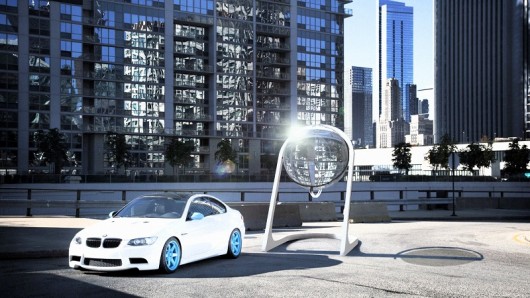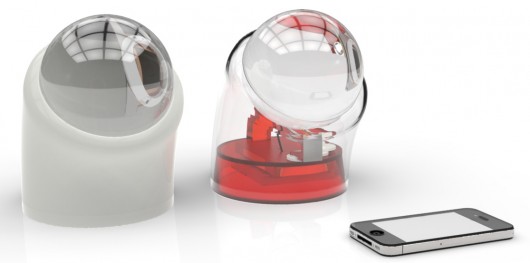Rawlemon's beautiful, spherical solar energy generators
January 14, 2014

Rawlemon has designed an aesthetic take on solar power devices
Despite their noble cause of harnessing clean, renewable energy from the sun, solar panels tend to be aesthetically uninspiring. Solar start-up Rawlemon aims to change all that with a new, and undeniably beautiful, take on concentrated photovoltaic (CPV) technology.
Created by Andre Broessel, a German architect inspired by his daughterís toy marbles, the Rawlemon design uses a spherical lens to concentrate sunlight on a small photovoltaic panel and combines this with a dual-axis pivot that tracks the movement of the sun.
According to the designer the transparent sphere is able collect and concentrate diffuse where traditional devices cannot and as well as providing an efficiency boost, they can be used in far more locations than their flat, fixed counterparts. It's also claimed that by concentrating the sunís light in one area, the Rawlemon design reduces the solar cell surface required to just 1 percent of that required by a traditional panel.
Rawlemon aims to bring a range of devices to market starting with the 10-cm (3.9-in) Beta.ey S phone charger, which it is currently the subject of an Indiegogo campaign. The funds raised are earmarked for the production and certification of the Beta.ey S. The charger is compatible with any phone that uses a USB 2.0 charging port and has a battery storage capacity of 27.5 Whr.
The Beta.ey S and the Beta.ey S Special Edition are Rawlemon's phone charger models
As well as a Bet.ey S Special Edition and a Beta.ey XL designed for charging tablets, Rawlemon has some larger devices in its portfolio. The 100-cm (39.4-in) Beta.ray 1.0 will generate up to 1.1 kWh a day, which is enough to run a laptop for about two days. It has a 1.8 kWh battery.
The largest device in the Rawlemon range is the 180-cm (70.1-in) Beta.ray 1.8 that will generate up to 3.4 kWh a day, enough to run your laptop for almost a week. It has a 5.4 kWh battery. Both the Beta.ray 1.0 and 1.8 feature water-filled acrylic-polymer lenses, as opposed to the solid lenses of their smaller siblings, plus they generate thermal energy as well as solar.
Rawlemon is also developing a system it calls Microtrack, that uses the same technology but is installed as a building skin. Microtrack will will produce energy during the day and can be used as a multimedia display at night.
Beta.ey is planned for release later this year and will be followed by the Beta.ray next year. Rawlemon estimates that the Microtrack system will take three years to bring to market.
The design is a thing of beauty, but does it stack up as being more effective than flat PVs or other concentrator designs? Those water-filled spheres must be heavy after all. We'd love to hear your thoughts in the comments section below.
The Rawlemon video pitch is below.
Source: Rawlemon
